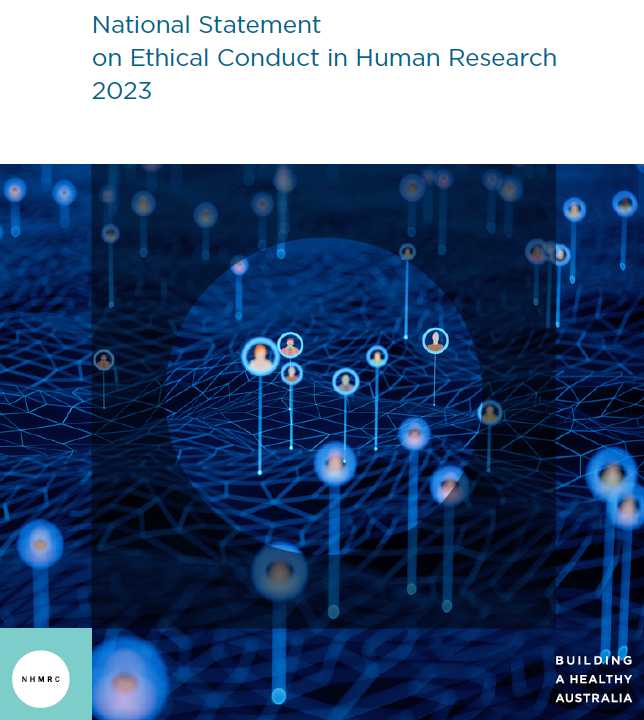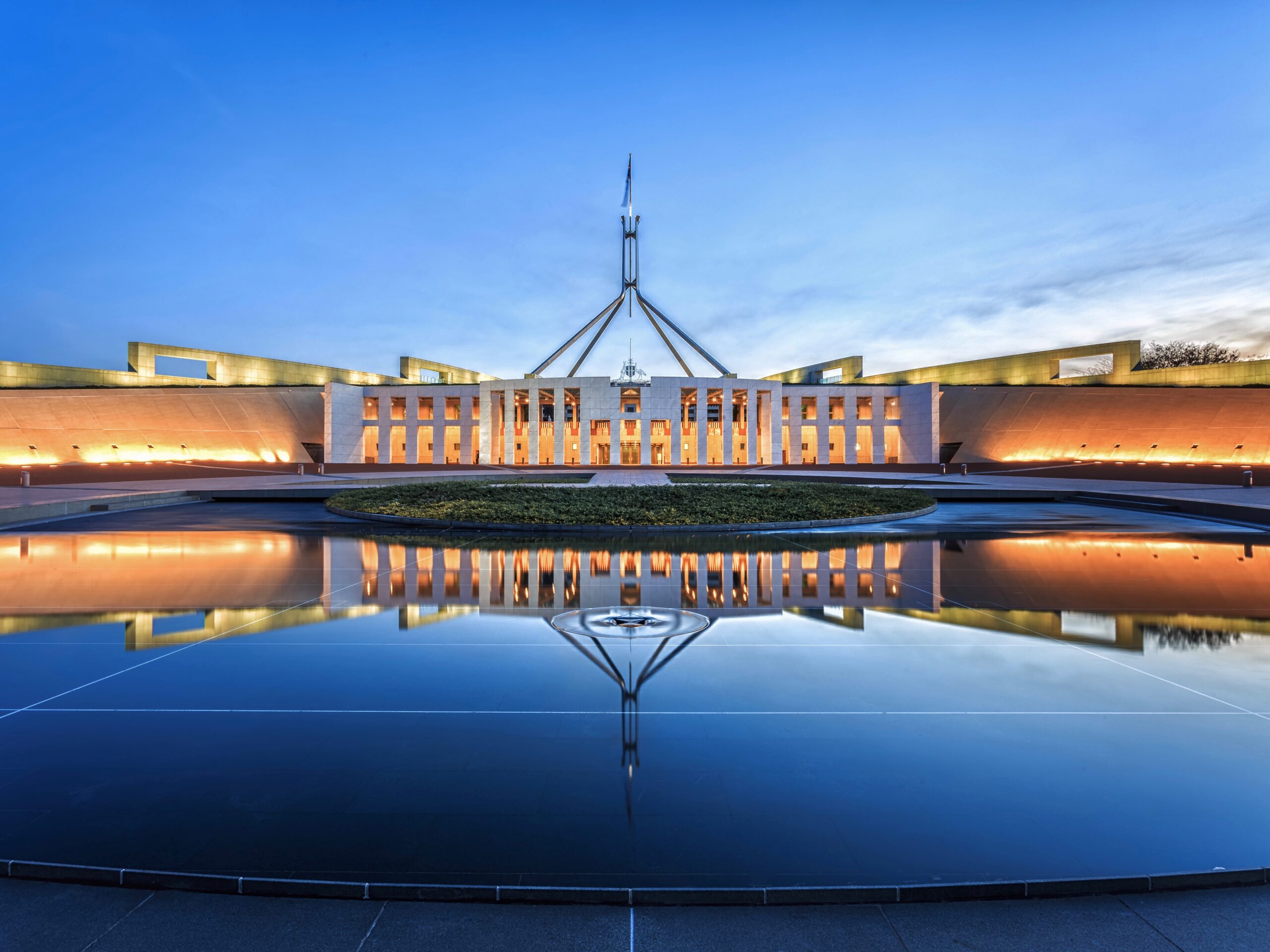Summary
Treasurer Jim Chalmers’ mini Budget in October last year implemented some of the new Government’s election promises and cut some former Government’s programs. Tonight, the Government has delivered its first full Budget, setting the agenda and responding to the ongoing pressures of high inflation, a Medicare system in need of reform, a housing crisis and the need to decarbonise and diversify our economy.
The surprise Budget surplus for this year has been delivered, in part, by higher than expected commodity prices. Commodity prices are expected to fall in the future, and the Government has committed to diversifying our economy with more high value advanced manufacturing, including medical products. While some progress is made in this Budget, there is still more that can and must be done.
The rising cost of living has continued to be a key political issue. In the March 2022 Budget, the CPI was forecast to be 3.0% for 2022-23. The Budget tonight expects inflation to have peaked, at around 7% p.a. and to fall to 3.25% over 2023-24. Inflation increases the cost of undertaking health and medical research and innovation. Government funding for research has failed to keep pace with inflation over successive Budgets. This Budget delivers some relief with real increases in funding for ARC programs, while the NHMRC’s MREA is forecast to keep up with inflation.
Please read on for our summary of what this Budget means for health and medical research and innovation.
Health Portfolio
Improved digital health systems
The Budget includes a $951.2 million over 4 years investment in digital health technologies to build a more efficient, connected and collaborative healthcare system. This includes:
-
- $325.7 million, to make the Australian Digital Health Agency an ongoing entity, so that it can continue to deliver important digital health infrastructure, including upgrading My Health Record. Only one in 10 medical specialists currently use My Health Record and only one in five diagnostic imaging reports are uploaded. We continue to await further information on a Framework for secondary use of My Health Record data for research purposes.
- $429 million to ensure that My Health Record is easier to use, is compatible with the information and billing systems that health practitioners are already using, and connects the health system so that patients can access and securely share their health data.
- $126 Million to renew the Intergovernmental Agreement on National Digital Health for 4 years to progress the secure, safe and efficient sharing of information across the health system.
Australia’s first National Clinical Quality Registry Program receives $40 million over 4 years. Nominated areas are dementia, cystic fibrosis, and pelvic floor disorders. This is good news, reversing several years of delays; registries are a vital bridge between healthcare and research.
Australian Centre for Disease Control (ACDC)
The Government is fulfilling its election promise to create the ACDC, backing up the $3.2 million allocated in the October Budget for preparatory work with $91.1 million to establish an ‘interim’ Australian Centre for Disease Control in the Department of Health and Aged Care and replenish the National Medical Stockpile.
Other announcements include
- $260m invested in a new national lung cancer screening program, with at risk Australians able to get a lung scan every two years, as recommended by the independent Medical Services Advisory Committee.
- The Therapeutic Goods Administration (TGA) will receive $61 million over 4 years for a range of activities aimed at protecting public health) including continued assistance to small and medium enterprises particularly those developing emerging technologies.
- $26.3 million over 4 years to support equity in the healthcare system and improve the health of Australian women and girls), including through the Australian Longitudinal Study on Women’s Health and Australian Institute of Health and Welfare National Maternity Data development project.
- $900,000 to develop a 10 Year National Action Plan for the Health and Wellbeing of LGBTIQA+ people, and to establish an LGBTIQA+ Health Advisory Group.
Consistent with Research Australia’s sustained advocacy on this issue, this Budget sees the Government’s funding to the NHMRC’s Medical Research Endowment Account appear to just keep up with projected inflation, but with an unexplained decline in funding in the last year of the forward estimates. The MRFF funding meanwhile is static at $650 million per annum, meaning it fails to keep up with inflation and is declining in real terms.
Medical Research Future Fund
The funding available from the MRFF each year is dependent on the investment return on its capital. For 2023-24 the Future Fund Board of Guardians has determined the amount available for grants of financial assistance is $870 million. [1] Despite this, only $650 million has been made available as funding in 2023-24. And this is despite an underspend in 2022-23 of more than $50 million.
| $m. |
22-23 |
23-24 |
24-25 |
25-26 |
26-27 |
| Funding from MRFF 2023 Budget |
598.0 |
650.0 |
650.0 |
650.0 |
650.0 |
| Funding from MRFF 2022 Budget (OCT) |
650.0 |
650.0 |
650.0 |
650.0 |
|
| Funding from MRFF 2022 Budget (MAR) |
650.0 |
650.0 |
650.0 |
650.0 |
|
There are programs that could be extended or expanded immediately, including support for early and mid career researchers and continuation of the highly regarded REDI program. Other programs could be established or piloted relatively easily, including the Clinical Research Fellowships proposed previously by Research Australia.
We will be working with the Government to understand why funding to the MRFF hasn’t been increased in 2023-24 even though more funding is available and what the intentions are for future years.
NHMRC Programs
Funding for the NHMRC’s Medical Research Endowment Account has increased slightly since the October Budget, to $910 million in 2023-24. An increase of around 3.6% over 2022-23, this is about equivalent to forecast inflation. There are similar annual increases in the next two financial years, before a drop of around $12 million in 2026-27. There is no explanation at this stage for the forecast decline. Overall, the MREA is set to at least keep pace with expected inflation over the next few years, an improvement on years of real declines in funding.
| $m. |
22-23 |
23-24 |
24-25 |
25-26 |
26-27 |
| Funding to MREA 2023 Budget |
877.952 |
910.652 |
940.330 |
962.039 |
949.747 |
| Funding to MREA 2022 Budget (OCT) |
877.952 |
905.160 |
922.365 |
938.095 |
|
| Funding to MREA 2022 Budget (MAR) |
877.952 |
891.094 |
905.355 |
918.985 |
|
Revamping Primary Care
This Budget responds to the recommendations of the Strengthening Medicare Taskforce, delivering $6.1 billion to strengthen Medicare through:
-
- A $3.5 billion investment to triple bulk billing incentives, for free GP consultations for 11.6 million children under 16, pensioners and other Commonwealth concession card holders; and
- A $1.5 billion indexation boost to Medicare rebates –the biggest increase in 30 years.
Additionally, more than 300 medicines will be cheaper for 6 million Australians who will be able to buy 2 months’ worth of medicine with a single prescription. Fewer visits to the GP and pharmacy will save patients an estimated $1.6 billion.
MyMedicare ($19.7 million over 4 years) will build a stronger relationship between patients and their primary care teams. It is voluntary and open to anyone, with patients able to register with their preferred practice, GP and care team. MyMedicare will also support access to longer telehealth consultations ($5.9 million over 4 years).
It is interesting to see focused funding for cutting-edge patient clinical services will be funded through Medicare ($118.2 million over 5 years) including:
-
- genetic testing for childhood hearing loss
- genetic testing for haematological malignancies
- profiling tests to determine a patient’s risk of recurrent breast cancer
- testing for the diagnosis of mitochondrial disease.
While the Research Australia welcomes the major changes this will make to the delivery of primary care in Australia for the next decade and beyond, there has been no commitment to fund research to guide the design and implementation of these measures, or to support their evaluation. Measures to boost the primary care workforce similarly, do not include support for researchers to generate the evidence for improved primary care.
Education Portfolio
Nearly half of all Australian health and medical research is undertaken in the higher education sector, and the Department of Education makes a significant contribution to the funding of this research through several programs, as outlined below.
ARC Programs
The Australian Research Council’s Funding Programs are critical to Australian publicly funded research, including to the life sciences and medical technologies.
Discovery Program
Over the forward estimates in this Budget, funding to the ARC for the Discovery Program increases by 8% in 2023-24 compared to this year, and by an average of 8% per annum in 2024-25 and 4% in 2025-26 and by 3%% in 2026-27. This means the Discovery Program is forecast to increase slightly in real terms (i.e. at a rate higher than inflation).
| $m. |
22-23 |
23-24 |
24-25 |
25-26 |
26-27 |
| 2023 Budget |
511.074 |
552.390 |
599.499 |
629.581 |
646.895 |
| 2022 Budget (OCT) |
511.074 |
551.867 |
596.388 |
622.986 |
|
| 2022 Budget (MAR) |
511.074 |
535.915 |
562.406 |
585.206 |
|
Linkage Program
| $m. |
22-23 |
23-24 |
24-25 |
25-26 |
26-27 |
| 2023 Budget |
317.251 |
343.808 |
373.989 |
402.784 |
430.918 |
| 2022 Budget (OCT) |
319.503 |
345.731 |
374.289 |
400.792 |
|
| 2022 Budget (MAR) |
340.820 |
357.704 |
375.595 |
390.950 |
|
| 2021 Budget |
329.948 |
334.109 |
339.622 |
|
|
| 2020 Budget |
325.240 |
327.074 |
N/A |
|
|
| 2019 Budget |
301.741 |
N/A |
N/A |
|
|
The ARC Linkage Program has been charged with delivering the Industry Fellows component of the University Research Commercialisation Scheme. Accordingly there is a boost to the Linkage Program’s funding in the next financial year of around $26 million compared to 2022-23, and annual increases in subsequent years of 8% to 9% per annum. This means that like the Discovery Program, the Linkage Program is forecast to increase in real terms (i.e. at a rate higher than inflation).
Research Support
In addition to providing funding for the ARC research programs, the Department of Education provides funding to universities to help cover the indirect costs of research.
In the 2020 Budget, the Government used the Research Support Program to provide a vital one off injection of $1 billion into higher education research in that financial year, with funding in subsequent years reverting to normal’. The 2023-24 Budget provides increases of around 5% per annum in the Research Support Program from 2023-24, meaning that funding for this program also increases slightly in real terms if inflation is as predicted.
Research Support Program
| $m. |
22-23 |
23-24 |
24-25 |
25-26 |
26-27 |
| 2023 Budget |
951.188 |
1005.282 |
1064.389 |
1101.524 |
1131.792 |
| 2022 Budget (OCT) |
951.188 |
1004.314 |
1058.779 |
1089.934 |
|
| 2022 Budget (MAR) |
951.188 |
978.674 |
1,002.668 |
1,028.230 |
|
Funding for the indirect costs of research funded by the MRFF is provided from the Research Support Program. With the MRFF providing hundreds of millions of dollars in funding to universities, a substantial increase in the Research Support Program is needed just to maintain the levels of research support funding for research projects at their current already inadequate level. The issue of indirect research costs remains unresolved for the whole health and medical research sector and indeed publicly funded research more broadly. Research Australia continues to call for a whole of government approach to the issue of funding indirect research costs.
Research Training
The Research Training Program (RTP) provides funding to universities to support higher degree by research students (mostly PhDs). Funding for the RTP declined in absolute terms between the 2019 and 2020 Budgets, and only partly recovered in the 2022 Budget. Consistent with the October Budget, the latest Budget provides increases of around 6% per year in 2023-24 and 2024-24, before the annual increase drops to around 3%. Inexplicably, funding actually declines slightly in 2026-27, to $1.26 billion.
| $m. |
22-23 |
23-24 |
24-25 |
25-26 |
26-27 |
| 2023 Budget |
1092.766 |
1154.911 |
1222.827 |
1264.691 |
1260.070 |
| 2022 Budget (OCT) |
1092.766 |
1153.800 |
1216.372 |
1251.497 |
|
| 2022 Budget (MAR) |
1092.766 |
1124.344 |
1151.909 |
1181.153 |
|
Australia’s Economic Accelerator
The Australia’s Economic Accelerator was announced in the March 2022 Budget, but the legislation was only passed earlier this year. This is a $1.6 billion program over 10 years, administered by the Department of Education to overcome the valley of death that currently exists between the point at which public research funding ceases (typically publication) and the point at which commercial investors are prepared to get involved. Unlike ARC programs, the Accelerator is open to application for medical products. The funding for the program reflects the delayed start in 2022-23 with higher funding over the forward estimates in subsequent years.
| $m. |
22-23 |
23-24 |
24-25 |
25-26 |
26-27 |
| 2023 Budget |
10.172 |
99.536 |
163.247 |
161.646 |
212.089 |
| 2022 Budget (OCT) |
10.172 |
99.444 |
162.395 |
159.95 |
|
| 2022 Budget (MAR) |
49.160 |
99.444 |
149.498 |
154.601 |
|
National Collaborative Research Infrastructure (NCRIS) Program
The NCRIS Program funds vital national research infrastructure needed to support Australian research. The most recent National Research Infrastructure Roadmap nominated synthetic biology, digital research infrastructure, collections (biobanks) and facilities to scale up materials for clinical trials.
This Budget maintains the forecast annual boost to NCRIS of more than $100 million from 2023-24. The new Research Infrastructure Investment Plan should provide more detail about how this funding will be allocated once it is completed; hopefully it will be announced soon.
| $m. |
22-23 |
23-24 |
24-25 |
25-26 |
26-27 |
| 2023 Budget |
286.043 |
402.290 |
503.116 |
462.850 |
372.323 |
| 2022 Budget (OCT) |
286.043 |
400.028 |
499.848 |
458.338 |
|
| 2022 Budget (MAR) |
286.043 |
396.826 |
496.739 |
454.441 |
|
Industry, Innovation and Science Portfolio
National Reconstruction Fund
Fulfilling another election promise, the Government earlier this year passed legislation to create the National Reconstruction Fund (NRF). The NRF will invest $15.0 billion over 7 years from 2023–24 to provide targeted co-investments in seven priority areas: resources; agriculture, forestry and fisheries sectors; transport; medical science; renewables and low emission technologies; defence capability; and enabling capabilities.
The NRF is expected to generate revenue from investments, with estimated receipts of $188.7 million over the forward estimates from the $15 billion of investments in loans, equity investments and guarantees. The returns will be reinvested to ensure the NRF’s sustainability.
CRC Program
The Cooperative Research Centre (CRC) Program is important to health and medical research and innovation, with many of the CRCs funded over the 30 year life of the program being health related. Current CRCs include the Digital Health CRC and the Autism CRC.
The smaller CRC projects program is also relevant, with recently funded projects including the creation of better brain electrodes and development of a bionic medical device that delivers high-fidelity visual-spatial perception for blind people. Funding for the CRC Program is scheduled to increase slightly faster than forecast in the March 2022 and October Budgets, but not quite enough to keeping up with projected inflation.
| $m. |
22-23 |
23-24 |
24-25 |
25-26 |
26-27 |
| 2023 Budget |
199.374 |
200.532 |
208.046 |
205.199 |
209.737 |
| 2022 Budget (OCT) |
199.374 |
199.962 |
205.054 |
201.579 |
|
| 2022 Budget (MAR) |
199.374 |
193.117 |
197.070 |
193.540 |
|
| 2021 Budget |
197.815 |
191.042 |
193.807 |
N/A |
|
CSIRO
The CSIRO has Flagship Programs relevant to health and medical research and is a key collaborator and partner in research. While it generates much of its own revenue it is also funded by the Government. The Government contribution to the CSIRO outlined in the Budget rises in the next two financial years before dropping back again. There are slight increases on the funding outlined in the October Budget.
| $m. |
21-22 |
22-23 |
23-24 |
24-25 |
25-26 |
26-27 |
| 2023 Budget |
|
991.134 |
1,008.739 |
934.391 |
945.155 |
948.486 |
| 2022 Budget (OCT) |
949.037 |
991.134 |
1.005.563 |
919.405 |
931.573 |
|
| 2022 Budget (MAR) |
949.037 |
991.289 |
985.625 |
899.352 |
904.477 |
|
New beamlines for Synchrotron
ANSTO’s Australian Synchrotron continues its partner-funded $98 million BR-GHT beamline expansion program, with eight new beamlines being constructed. This will nearly double the Synchrotron’s capacity and allow for broader engagement with researchers and industry in a range of applications, from high-tech manufacturing, including aerospace and transport, to health, including drug development and medical implants.
Entrepreneurs’ Program makes way for Industry Growth Program
The Entrepreneurs’ Program is a long standing funding program to support the commercialisation and development of new innovations. This Budget signals the end of the program, with a slow decline over several years, presumably as existing commitments are concluded.
| $m. |
22-23 |
23-24 |
24-25 |
25-26 |
26-27 |
| 2023 Budget |
126.900 |
53.384 |
9.208 |
2.298 |
3.008 |
The Entrepreneurs’ program is being replaced with a new $397 million Industry Growth Program, providing grants of between $50,000 and $5 million to startups. It is focused on the same target areas as the National Reconstruction Fund (NRF), including medical products, and is designed to support new businesses to the point where they are eligible for investment from the NRF.
Conclusion
Research Australia will continue to provide analysis and commentary in the coming days and weeks. We invite your responses and reactions to how the 2023 Budget affects you and your work.
You can share your views with us at our 30-minute budget analysis as part of our NEW – Member Event Series. We will provide a snapshot of Federal budget changes that affect the funding environment for Australian health and medical research and innovation.
When: Thursday 11 May 2023
Time: 12 midday – 12.30pm (AEST)
Platform: Zoom (details to be supplied after registration.)
If you have not yet registered, please click here.
Please contact Greg Mullins, Head of Policy, greg.mullins@researchaustralia.org
Ends …..
[1] Australian Government Future Fund, Determination pursuant to section 34(1) of the MRFF Act 2015 Maximum annual distribution for financial year 2023-24, obtained under FOI










